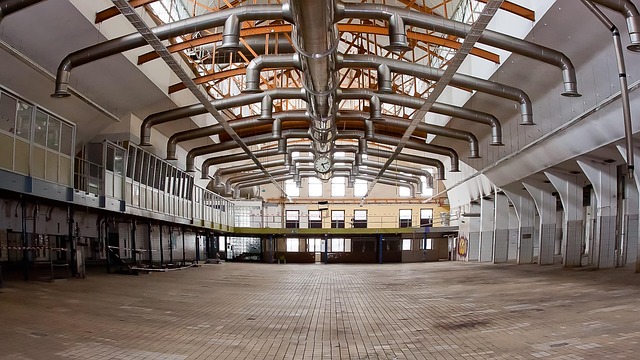TL;DR:
Photorealistic structural renderings revolutionize reinforced concrete construction by visually communicating complex elements like post-tensioning and rebar detailing before project start. These detailed visualizations, made possible by advanced digital modeling software, enhance stakeholder understanding, streamline project coordination, reduce errors, and ultimately lead to superior concrete structures. By accurately depicting geometric intricacies, material properties, and natural lighting, these renderings facilitate informed decision-making, client communication, and structural integrity assurance.
In the realm of construction, reinforced concrete structures demand meticulous planning and precise visualization. This article explores post-tensioning and rebar detailing, crucial aspects of reinforced concrete design. We delve into the significance of photorealistic structural renderings, which enhance project communication and quality control. High-quality visualizations offer advantages such as improved accuracy, efficient design iterations, and client satisfaction. Best practices for creating accurate renderings ensure structural integrity and aesthetic appeal, making them indispensable tools for modern construction projects.
Understanding Post-tensioning and Rebar Detailing
Post-tensioning and rebar detailing are crucial aspects of reinforced concrete construction, showcased and enhanced through advanced photorealistic structural renderings. Post-tensioning involves applying tension to a concrete slab or beam after it has been cast, using steel tendons that are tightened to improve the overall strength and stiffness of the structure. This technique is particularly useful for spanning long distances without support, making it ideal for floor systems in high-rise buildings and bridges.
Rebar detailing refers to the precise arrangement and connection of steel reinforcement bars (rebar) within a concrete structure. It involves creating detailed drawings that specify the size, spacing, and alignment of rebar, ensuring optimal concrete compression and tension. Photorealistic structural renderings play a vital role in visualizing these intricate details, allowing engineers, architects, and stakeholders to gain a clear understanding of the final construction before it begins.
The Role of Photorealistic Structural Renderings
In today’s digital era, the construction industry heavily relies on visual representation to communicate complex design ideas and ensure accurate project execution. Photorealistic structural renderings play a pivotal role in this process, offering an immersive and detailed view of reinforced concrete structures before they’re built. These highly realistic visualizations not only showcase the final aesthetic but also reveal crucial structural elements like post-tensioning systems and rebar placements. By integrating intricate details such as these, photorealistic renderings serve as powerful tools for stakeholders—from architects and engineers to clients—to make informed decisions, ensuring both the structural integrity and visual appeal of concrete structures.
Advantages of High-Quality Reinforced Concrete Visualizations
High-quality reinforced concrete visualizations, including photorealistic structural renderings, offer numerous advantages in construction and architectural projects. These detailed visual aids provide a clear and accurate representation of the final structure, allowing designers, engineers, and clients to make informed decisions before construction begins. With advanced rendering techniques, every aspect of the concrete element can be precisely depicted, from the intricate patterns of rebar placement to the subtle textures and finishes.
Such renderings enable better coordination among project stakeholders. Architects, structural engineers, and contractors can collaboratively review the visualizations, ensuring everyone is on the same page regarding design intent and structural requirements. This reduces potential errors, streamlines construction processes, and ultimately leads to higher-quality concrete structures. Moreover, photorealistic visuals enhance client communication, helping them visualize the final product and fostering trust in the project’s execution.
Best Practices for Creating Accurate Renderings
Creating accurate and high-quality photorealistic structural renderings for reinforced concrete projects requires adherence to best practices. Firstly, ensure that all geometric elements, including post-tensioning systems and rebar placements, are meticulously detailed and precisely represented in the digital model. This involves using advanced software capable of rendering intricate structural components with meticulous accuracy. Incorporate real-world material properties, such as concrete textures and steel finishes, to achieve photorealism.
Additionally, pay close attention to lighting and shadow effects to mimic natural illumination conditions, enhancing the overall visual appeal of the rendering. Regularly validate the digital model against actual construction documents and on-site observations to maintain accuracy throughout the design process. These practices ensure that final renderings not only look realistic but also serve as reliable representations of the intended structural design.
In conclusion, post-tensioning and rebar detailing are critical aspects of reinforced concrete construction, ensuring structural integrity and strength. Photorealistic structural renderings play a pivotal role in visualizing these complex elements, providing stakeholders with accurate representations that facilitate informed decision-making. By leveraging high-quality reinforced concrete visualizations, professionals can streamline design processes, enhance communication, and ultimately deliver safer, more efficient structures. Adhering to best practices for creating accurate renderings ensures the reliability of these visual tools, making them indispensable in today’s construction industry.
